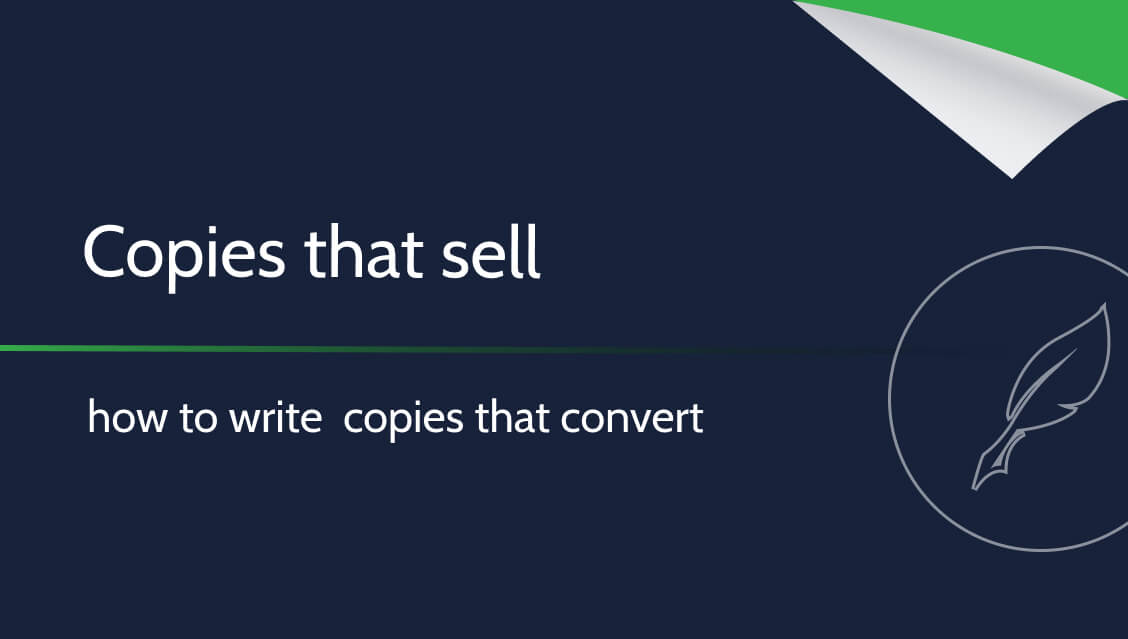Copies that sell – how to write copies that convert

Conversion is the basic measure of text effectiveness. A copywriter writes to sell, engage or build recognition. There are many goals, but it all comes down to conversions. Therefore, it is important to be able to properly adjust the content so that the recipient does what we expect. In the following article, we will explain how to write copy that converts.
What is conversion?
A conversion is the completion of a specific goal by a customer.
It used to be that the only measurable conversion was sales. Currently, we can analyze many more parameters, i.e. the so-called sales stages. The most fundamental ones include:
- building brand recognition – conversion is measured by the number of people who will remember the company;
- audience engagement – measured by users responding to company marketing messages (entries on the website and social media);
- sales – the indicator is the number of completed transactions.
In fact, almost any goal we care about can be a conversion. Other examples are:
- entering the website,
- clicking on “contact”
- subscribing to the newsletter,
- adding a product to the cart
These are measurable indicators, so it is easy to assess the effectiveness of the copy in relation to the actions taken.
Determining the goal is important for a copywriter who creates converting copies tailored to a particular sales stage.
Using content, it can build recognition, persuade you to make a purchase, and invite you to visit the website.
There are many possibilities, so let’s discuss what content looks like depending on your desired goal.
How to write copies that convert
There is no ready-made recipe for effective texts. If it existed, all companies would be prosperous. However, one thing is certain: high-converting text is individually tailored to the intended purpose.
The sales content will be of a different nature than the message that builds recognition. In addition to the goal, you also need to take into account the target group specific to each company.
Content for potential clients of a law firm is significantly different from texts for consumers of a local bakery.
It is very important that the message is understood by as many people as possible. Therefore, converting content must be closely tailored to the readers. Texts that are too difficult will be ignored, and texts that are too general will not provide optimal results.
So let’s move on to specific examples of how to create converting texts for basic marketing purposes.
Building recognition
Texts that build recognition must be exceptionally simple and understandable, because they are addressed to a large group of recipients.
A very clear message that will be associated with the company is important. Slogans and advertising slogans will work great, especially those with a rhythmic basis (a prime example: Calgon has a longer life for every washing machine!).
It is believed that an effective text that builds recognition is difficult to compose because it requires a lot of creative power – the content must be short and at the same time get to the heart of the company’s activities.
Engaging your audience
Influencing other people through text is not an easy thing, as it requires psychological knowledge combined with copywriting skills. In addition, the content pattern is very dynamic – converting content can vary significantly over the course of a month.
When formulating the engaging text, you should turn directly to the recipients. The originality is important, which will suppress in the users of the so -called banner blindness.
A call to action (CTA) may be helpful (i.e. calling for action, i.e. “What do you think about this?”).
Unfortunately, in the case of engaging recipients, it is not possible to specify further guidelines, as activities depend on the specific company and the current market situation. You have to meet the needs of your audience, but there is no ready-made recipe for this.
However, it is worth remembering to analyze statistics on an ongoing basis. Thanks to this, you can find out which messages are most active and use them to create further, converting content.
Sale
Can you sell with content? If this were not the case, copywriters would quickly lose their jobs.
The nature of sales content depends on:
- company specifics,
- audience groups
- preceding sales stages
The common thread is the language of benefits. As the name suggests, the offer should provide information about the specific benefits of the purchase. It is very important to show the company’s strengths and present what makes the offer stand out from the competition.
Summary
- We distinguish several sales stages, which include building brand recognition, engaging recipients, and selling.
- Converting content depends on many dynamic factors, but the two most important are the marketing goal and the target group.
- Experience and observation of results are the pillars on which effective texts are based.


















Leave a Reply